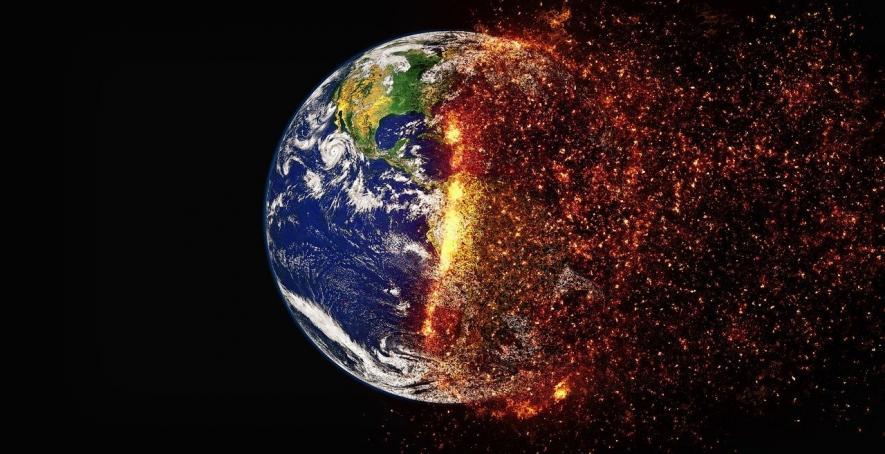New Astrophysics Research Finds Link Between Global Warming and Local Temperature Variations

Representational image.
The increasing instability in global weather has been ascribed to climate change. Humanity has started witnessing extreme weather conditions in almost every part of the world. How the worldwide variability of climate has its impacts manifested at local levels is also an active field of research. In fact, many theories and hypotheses are widely available today regarding this aspect of climate change.
In this regard, the latest observation by a researcher who works on astrophysics has brought in a new dimension. By using a mathematical approach inspired by research on the universe's light, the researcher has proposed how global warming may lead to locally unstable weathers in different parts of the world. The findings have been published in the journal "The European Physics Journal Plus" recently.
The human-made climate change has led to a situation where the temperature increases faster than ever before, and the Earth is now witnessing its warmest phase in the past 100,000 years. Since the advent of the industrial revolution, some 250 years back, the planet has warmed by 1.1 degrees Celsius.
Climate change has only offered extreme weather, such as the extreme heat condition in Canada last year, which was a historical record of around 50 degrees Celsius. It is not because of the heat waves alone that humanity has been battered by climate change; extreme cold, droughts, intense tropical storms, rainfall and snowfall all have reached new highs. And it is not the end; there are more severe conditions to be faced in the near future.
An interesting question of research in climate science has been how global warming impacts local weather conditions and brings in severity. Albert Sneppen, an astrophysics student at the Niels Bohr Institute, has moved one step closer to understanding the linkage between global warming and the instability of local weather. His field of research is primary black holes and stars. He came out with the intuition that the method normally used for the analysis of the distribution of light in the night sky may be used to analyse the fluctuation of temperature on Earth's surface.
Sneppen's astrophysical method is particularly meant to interpret the phenomenon called the 'Big Bang Afterglow'. The 'Big Bang Afterglow' or the 'Cosmic Microwave Background Radiation' is the remnant of the electromagnetic radiation from an early universe. This faint electromagnetic radiation spreads throughout space and is an important source of ancient data from the early universe. Notably, Sneppen observed during his astrophysical exploration that there is a coincidence between the heat distribution at the scale of the universe and that at the scale of the Earth.
"For decades, the heat radiation of the early universe has been studied in the night sky. Researchers use the so-called angular power spectrum which tells you how much all parts of the night sky -- both locally and globally -- are connected. And that is exactly what you want in climate research; a method of examining all scales of climate change at the same time," Seppen commented while explaining the new observation.
In simple words, what Sneppen's findings say is that climate change leads to the differences in temperature growth locally. Moreover, larger differences in temperature bring in more extreme weather patterns.
Further talking about how the weather is going to be more unstable in the coming times, the researcher said, "The instability and volatility of the weather have generally grown since the industrial revolution, but has especially gained momentum over the last 40 years. Together with several other theoretical and observational studies, this model indicates that the weather will become even more unstable in the coming decades."
Get the latest reports & analysis with people's perspective on Protests, movements & deep analytical videos, discussions of the current affairs in your Telegram app. Subscribe to NewsClick's Telegram channel & get Real-Time updates on stories, as they get published on our website.
























